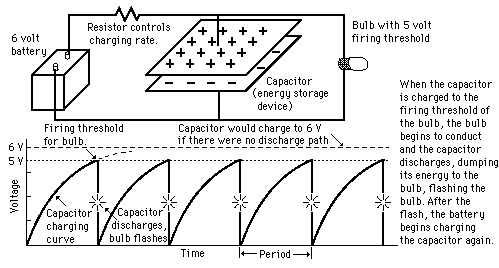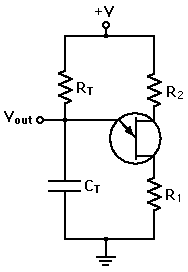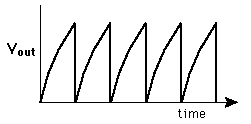Relaxation Oscillator Concept
The concept of a relaxation oscillator is illustrated by this flasher circuit where a battery repeatedly charges a capacitor to the firing threshold of a bulb, so that the bulb flashes at a steady rate.

A relaxation oscillator is a repeating circuit (like the flasher circuit illustrated above) which achieves its repetitive behavior from the charging of a capacitor to some event threshold. The event discharges the capacitor, and its recharge time determines the repetition time of the events. In the simple flasher circuit, a battery charges the capacitor through a resistor, so that the values of the resistor and the capacitor (time constant) determine the flashing rate. The flashing rate can be increased by decreasing the value of the resistance.
One of the reasons for the importance of the relaxation oscillator concept is that some neural systems act like relaxation oscillators. For example, the bundle of nerve fibers called the SA node (sino-atrial node) in the upper right hand part of the heart acts as the natural pacemaker of the heart, firing at a regular rate. The rate of this relaxation oscillator is variable, and can be increased in response to exertion or alarm. Other nerve cells recharge like a capacitor, but then wait for some kind of stimulus to fire. In response to some kind of trauma, it might be that the firing threshold is lowered enough to "self fire" and act as a relaxation oscillator. This is an intriquing possibility for explaining the ringing in the ears after a loud concert.
|
Index
Electronics concepts
Oscillators |


